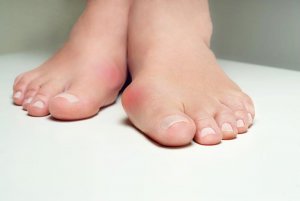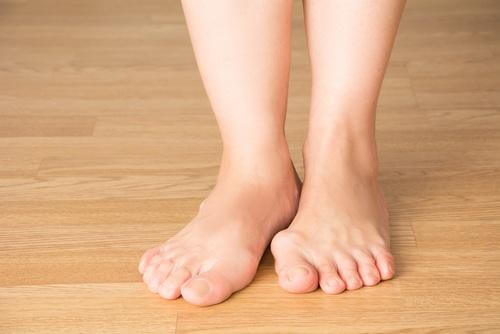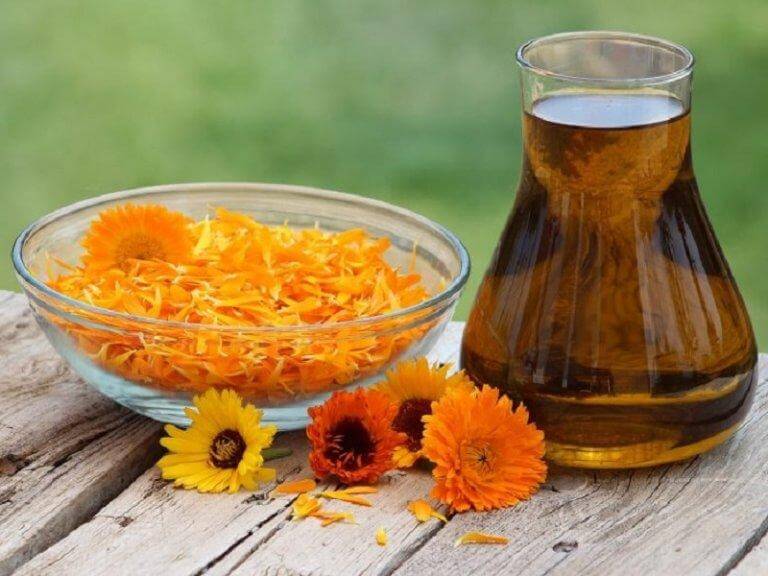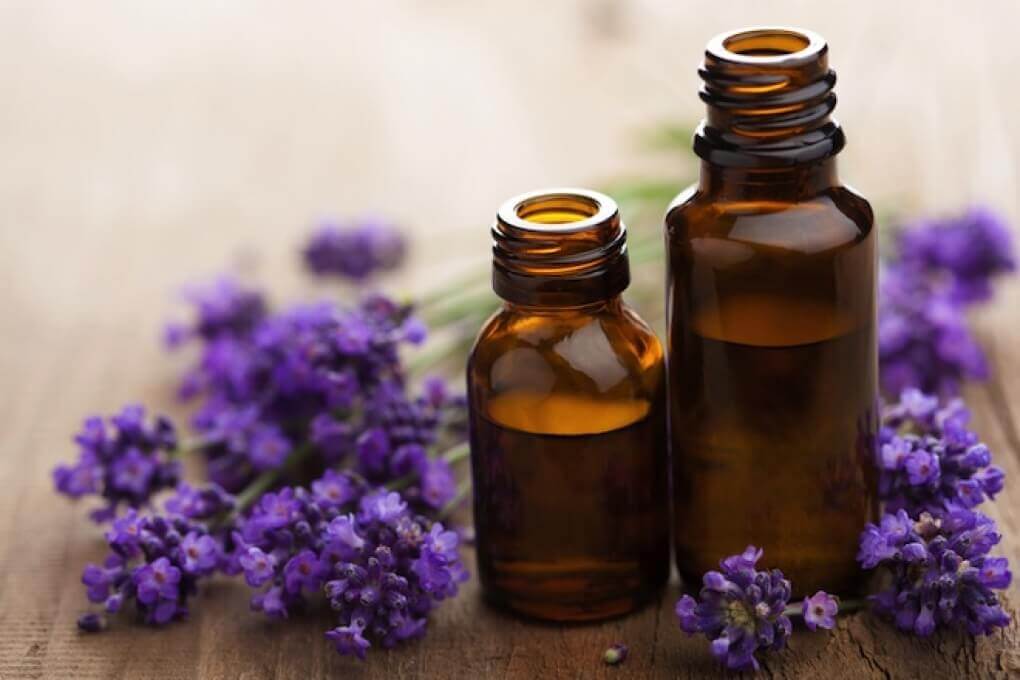5 Herbal Remedies That Help Fight Bunions

If you want to fight bunions naturally, you need to use remedies with anti-inflammatory and analgesic properties. Some medicinal plants like turmeric, common marigold, or lavender can be very effective. These plants help reduce pain and swelling. Remember that before opting for any measure, you should consult your doctor.
Keep reading to find out what the top 5 herbal remedies for bunions are. Put an end to the discomfort caused by this bony bump on your big toe with the help of these medicinal plants.
What are Bunions?

Bunions are bony bumps that form on the joint at the base of your big toe. This occurs when your big toe pushes against your other toe, forcing the joint of your big toe to stick out.
Among the factors that have an impact on its appearance are the shape of your feet and the use of inappropriate shoes.
There are inserts, insoles, splints, and correctors that help reposition the toes progressively. You can also do rehabilitation exercises that can be successful in the long term. However, people with extreme cases may resort to surgery.
See also: How to Prevent Bunions
Herbal Remedies for Bunions
In addition to being unsightly, bunions can be very annoying and affect your daily life, preventing you from performing normal activities. The first thing you should do is always go to the doctor’s office to get the most appropriate treatment for your case.
In addition, it’s possible to make a series of changes in your routine, starting by wearing comfortable shoes and avoiding high heels. At the same time, there are also plants that, thanks to their analgesic properties, can help reduce discomfort.
We want to clarify that this is what we mean when we talk about “fighting” bunions, to reduce inflammation and discomfort. No natural remedy is capable of completely curing this ailment. This can only be achieved with medical treatment. But this does not mean that natural products cannot be a good complement.
-
Common Marigold
For starters, you can fight bunions with common marigold. This lovely orange flower is the base for many healing lotions for wounds, inflammation, cuts, bites, etc.
When you apply common marigold to the affected area, you reduce inflammation, facilitate good circulation, and prevent calluses. How can you use it?
- You can use common marigold-based lotions (with active or homeopathic ingredients).
- On the other hand, you can also extract the juice from its flower since you’ll only need a bit.
- Finally, you can apply its essential oil.

-
Chamomile
Chamomile is a medicinal plant known for its anti-inflammatory and soothing properties, as demonstrated by a variety of investigations. When you apply this flower on your bunions, it reduces redness and prevents the problem from getting worse.
Another great thing about it is that most people already have this remedy at home since it’s a very common digestive infusion. But how can you use it?
- We recommend preparing a foot bath with concentrated chamomile tea and soaking your feet for 20 to 30 minutes. You can do this every night before bed.
- Furthermore, you can enhance the effect by massaging the affected area with chamomile essential oil.
-
Turmeric
Turmeric is a superfood that stands out due to its many medicinal properties. For starters, various studies have shown which is a good remedy to relieve pain, as it’s anti-inflammatory and analgesic. In fact, one of its components, curcumin, is part of some anti-inflammatory creams.
In addition, more recent research, published in the journal Life Sciences, claims that it has antioxidant and healing virtues, so it can be ideal to alleviate and promote healing of numerous skin conditions. You have the option of combining its topical application with its daily consumption:
- Topically: Apply turmeric powder directly on your bunions (with some water, aloe vera, or oil) as a healing lotion.
- Consumption: We recommend combining turmeric with olive oil and black pepper. The combination of turmeric with the healthy fats of olive oil and the pepper’s piperine multiplies its medicinal effects.
However, as it’s a stronger agent than the other remedies proposed here, it’s advisable to consult your doctor before starting to apply it, in case there may be any interaction.
-
Lavender
Lavender is one of the most common natural remedies and can alleviate many disorders due to its many properties.
Some studies suggest that it may have some influence on the nervous system, which gives it anti-inflammatory and relaxing properties. Thus, lavender is a good complement to combat bunions, since it relieves discomfort.
Its anti-inflammatory and soothing properties make it a very effective way to fight and prevent bunions from getting worse.
- We recommend applying some lavender essential oil directly on bunions.
- You can also mix it with olive oil, almond oil, or coconut oil to dilute it and give yourself a nice foot massage.
In addition, this massage will produce a nice calming effect on your whole body and the delicious aromas will soothe you.

-
Rue
Rue is a plant that, according to several studies, helps to soothe pain and reduce inflammation. It stands out for its coumarins, flavonoids, and vitamin C content.
This plant’s a great remedy to combat bunions in a natural way. It also helps in rheumatic diseases such as arthritis and osteoarthritis.
- Make a rue infusion and soak your feet in it for at least 15 minutes.
- You should repeat this every day until you see an improvement. Then, you can repeat 3 times a week.
How to combat bunions with natural remedies?
All these plants that we’ve presented are easy to obtain and it’s possible to find them in many establishments, such as herbalists. And we know that bunions can become very painful and affect daily life.
Therefore, it ‘s best that, at the slightest suspicion, go to the doctor. The sooner you start treatment, the more likely it is that you will be able to solve the problem without surgery.
Also, don’t hesitate to use these remedies to relieve bunion inflammation and reduce pain – they can be a real relief!
All cited sources were thoroughly reviewed by our team to ensure their quality, reliability, currency, and validity. The bibliography of this article was considered reliable and of academic or scientific accuracy.
- Akbik, D., Ghadiri, M., Chrzanowski, W., & Rohanizadeh, R. (2014). Curcumin as a wound healing agent. Life Sciences, 116(1), 1–7. Available at: https://doi.org/10.1016/j.lfs.2014.08.016. Accessed 28/04/2020.
- Chainani-Wu, N. (2003). Safety and anti-inflammatory activity of curcumin: a component of tumeric (Curcuma longa). The Journal of Alternative & Complementary Medicine, 9(1), 161-168. Available at: https://doi.org/10.1089/107555303321223035. Accessed 28/04/2020.
- Ferrari, J. (2009). Bunions. BMJ clinical evidence, 2009. Available at: https://www.ncbi.nlm.nih.gov/pmc/articles/PMC2907787/. Accessed 28/04/2020.
- Gupta. (2010). Chamomile: An anti-inflammatory agent inhibits inducible nitric oxide synthase expression by blocking RelA/p65 activity. International Journal of Molecular Medicine, 26(6). Available at: https://doi.org/10.3892/ijmm_00000545. Accessed 28/04/2020.
- Koulivand, P. H., Khaleghi Ghadiri, M., & Gorji, A. (2013). Lavender and the Nervous System. Evidence-Based Complementary and Alternative Medicine, 2013, 1–10. Available at: https://doi.org/10.1155/2013/681304. Accessed 28/04/2020.
- Preethi, K. C., Kuttan, G., & Kuttan, R. (2009). Anti-inflammatory activity of flower extract of Calendula officinalis Linn. and its possible mechanism of action. Indian Journal of Experimental Biology, 47(2):113-20. Available at: https://www.ncbi.nlm.nih.gov/pubmed/19374166. Accessed 28/04/2020.
- Raghav, S. K., Gupta, B., Agrawal, C., Goswami, K., & Das, H. R. (2006). Anti-inflammatory effect of Ruta graveolens L. in murine macrophage cells. Journal of Ethnopharmacology, 104(1–2), 234–239. Available at: https://doi.org/10.1016/j.jep.2005.09.008. Accessed 28/04/2020.
This text is provided for informational purposes only and does not replace consultation with a professional. If in doubt, consult your specialist.








